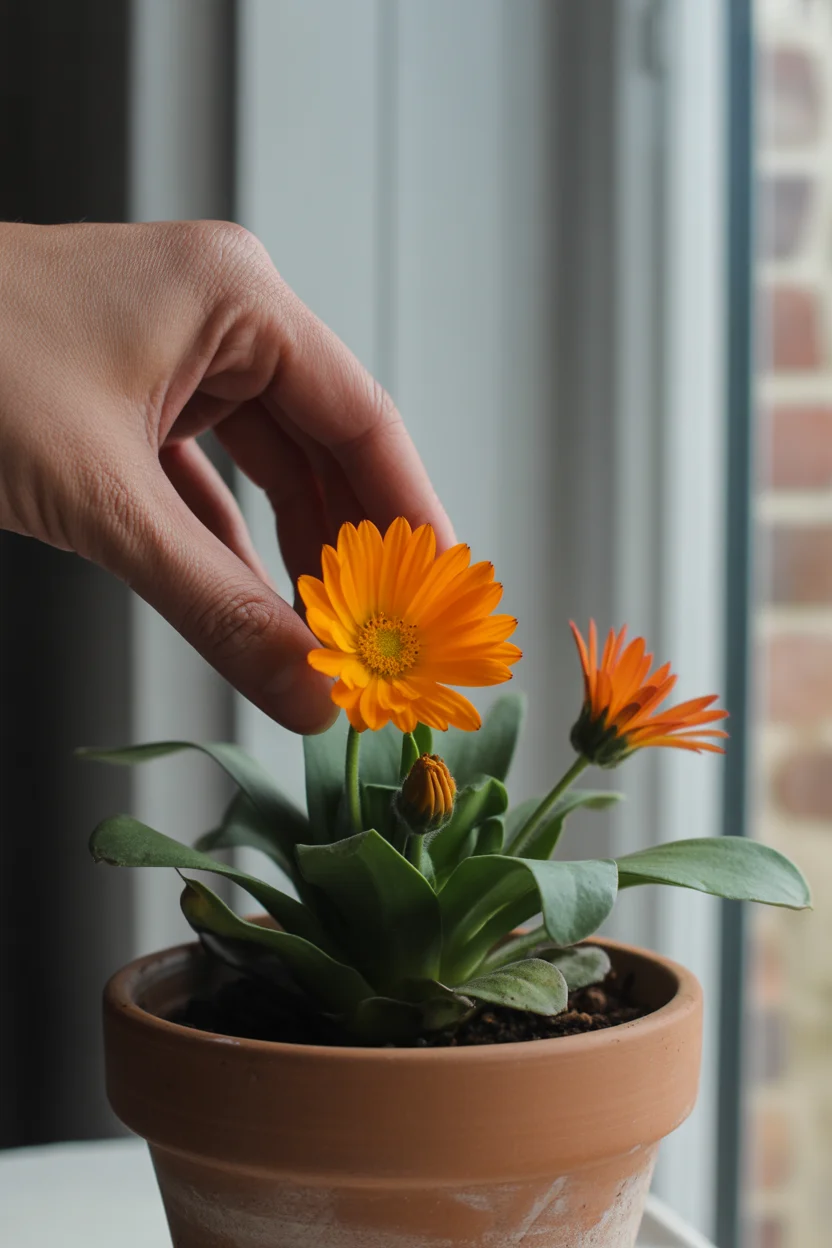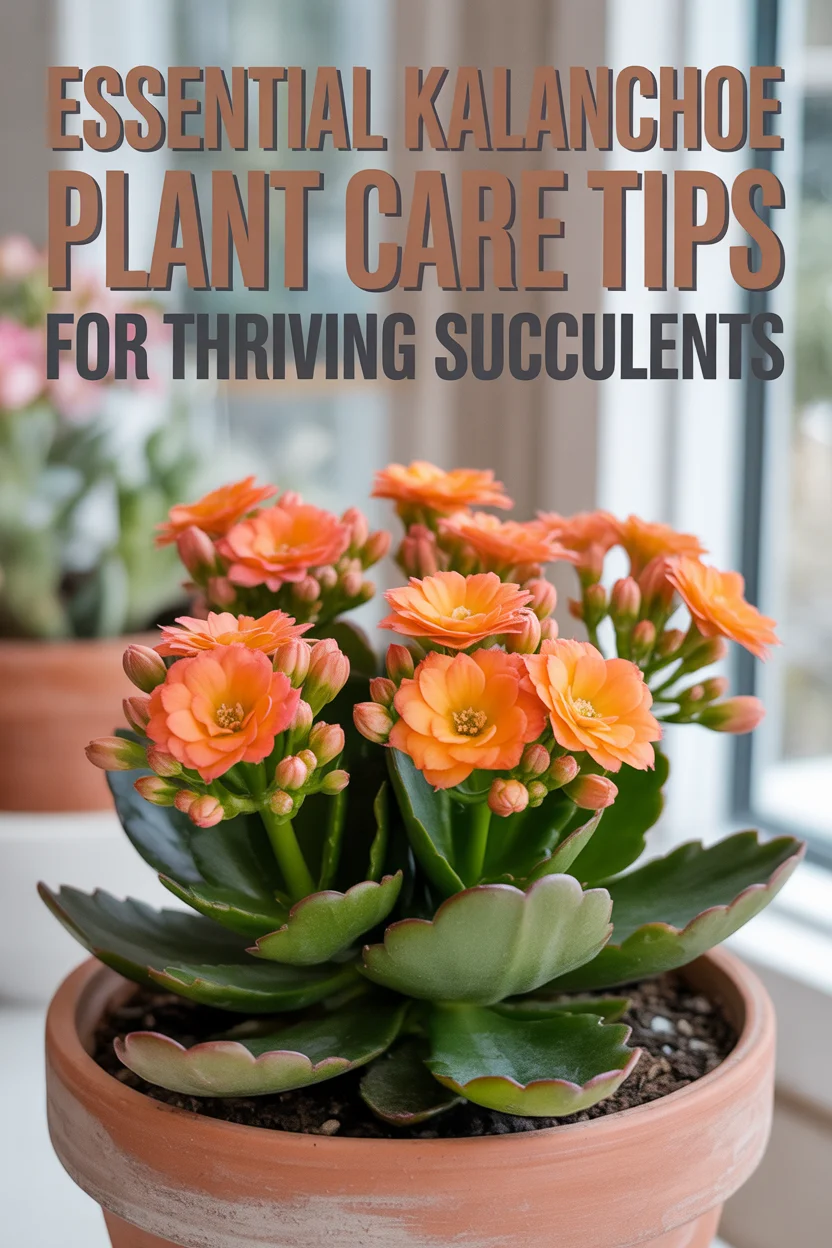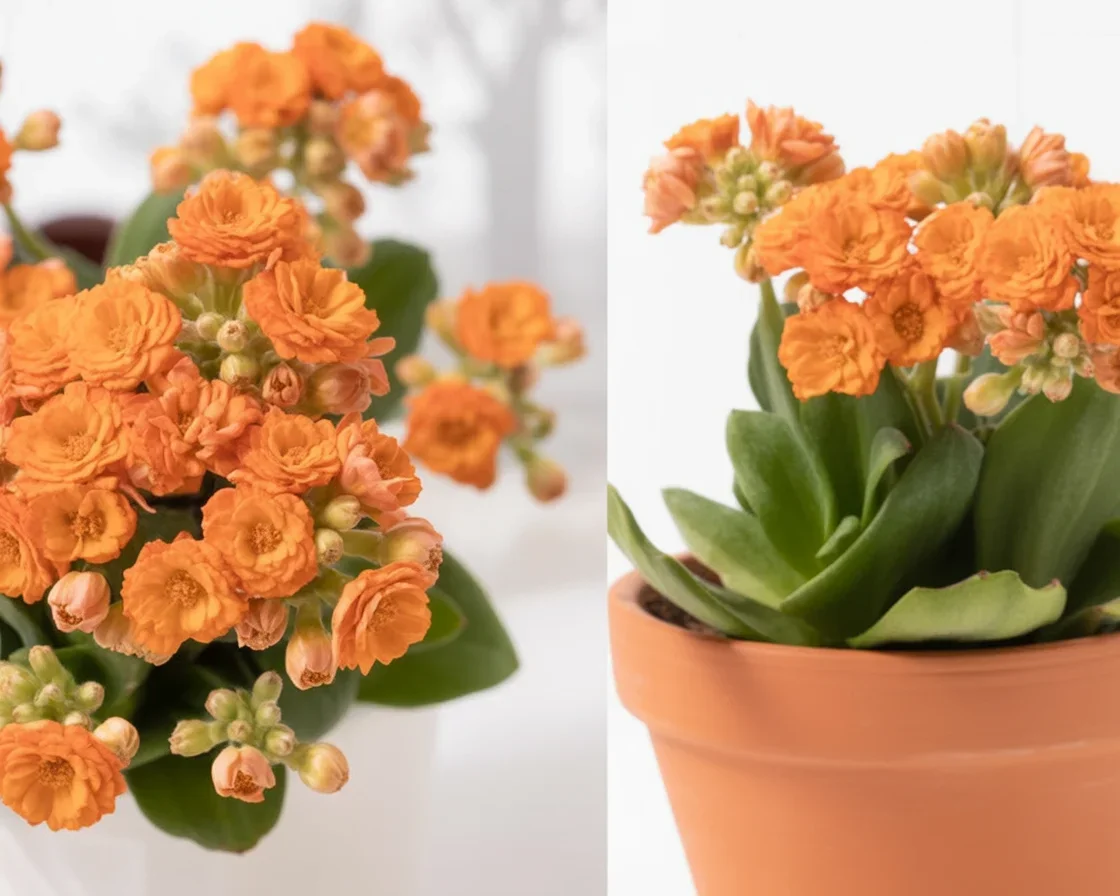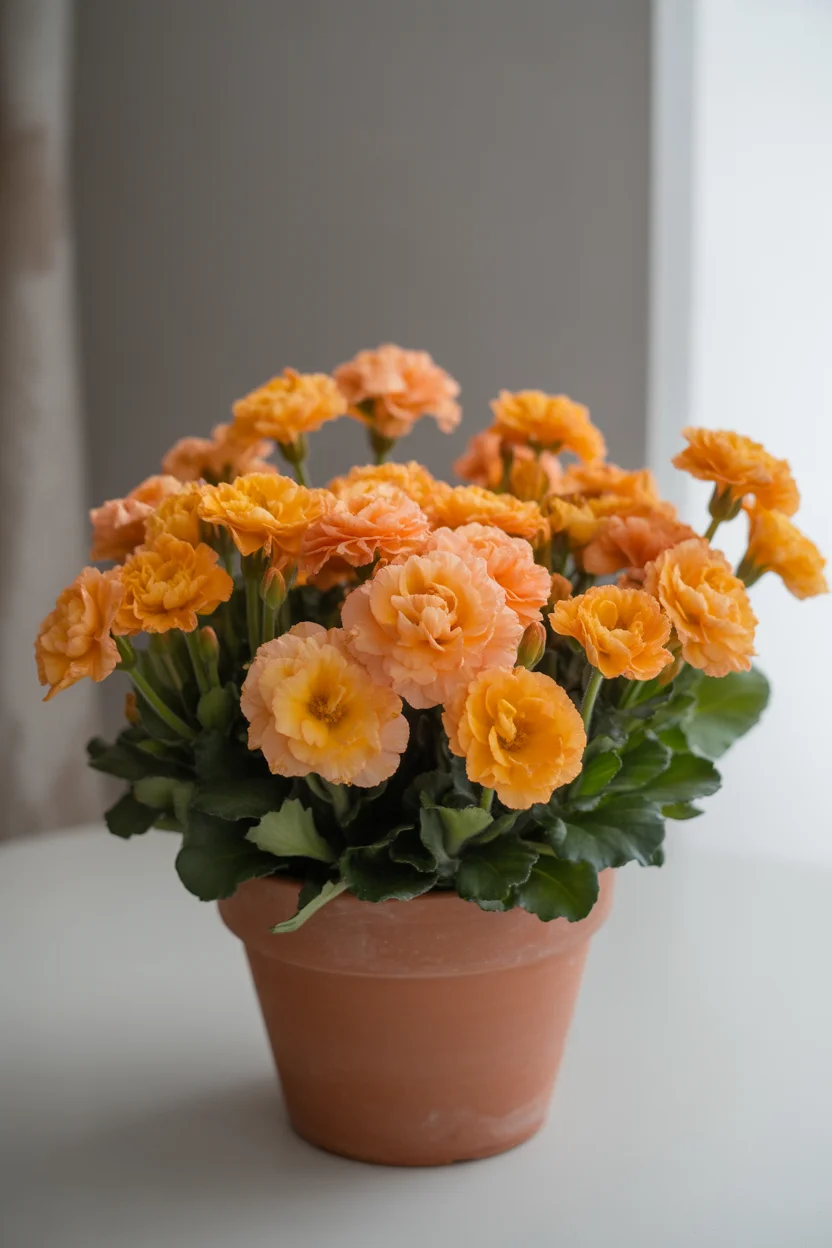Ever picked up a little kalanchoe plant and thought, “Wow, I hope I don’t murder this cutie in a week”? I hear you. Kalanchoe plant care can look simple, but sometimes those thick leaves start drooping or the blooms fizzle, and it’s just—ugh, you know? I’ve had my share of highs and lows with succulents, for sure. If you’re debating what actually works for bright blooms and happy plants (I once went down a deep rabbit hole at midnight, not even kidding), you’re in the right place. Stick around, and you’ll get the best tips I’ve learned—plus, check out this step-by-step with Carmen Jane and this wicked good China doll plant guide if you ever wanna branch out.
Table of Contents
Types and Cultivars of Kalanchoes to Try
Alright, before we get into the meaty stuff, let me tell you—there’s more to the kalanchoe family than those neon supermarket pots you see in, like, every checkout line. Some varieties? They’re genuinely funky. Kalanchoe blossfeldiana is probably what pops in your mind first—classic. But wow, try K. tomentosa (Panda Plant), which looks weirdly fuzzy and adorable.
Feeling adventurous? There’s Mother of Thousands. Honestly, it’s cute but a bit chaotic. That one sprouts baby plants everywhere, like confetti (it’ll take over if you let it). The “Flaming Katy” version is my grandma’s go-to—she says it’ll outlast your will to decorate for holidays, ha.
I mean, I started with the basic pink blooms, then ended up collecting a couple more just because my neighbor was obsessed. If you like seeing even more unusual foliage (some have these wild red edges), you gotta check out plant guides for fun options. Oh, and pro tip—check for compact cultivars if you want more house-friendly pots. They won’t sprawl off your kitchen shelf as quick.

Best Conditions For Kalanchoe Plant Care
Getting the spot and vibe right? Makes all the difference—like, if you’ve ever baked cookies and totally botched the oven temp, you know what I mean. Kalanchoe plants love bright, indirect light (not total sun-blast, though, unless you wanna crisp leaves). That one time I plopped mine right by the window, it got a bit sunburnt, not gonna lie.
Keep them warm—around 60-85°F feels perfect. If your space dips below that, they’ll sulk. Humidity? Eh, don’t stress. These guys like things on the dry side, but not desert dry, you get me?
Good drainage is essential. Soggy soil = sad plant. Cheap tip: add perlite or little bits of bark to regular cacti mix. Keeps roots breathing easy.
| Light | Temperature | Water | Soil |
|---|---|---|---|
| Bright, indirect sunlight | 60-85°F (16-29°C) | Let soil dry before watering | Well-draining, sandy mix |
| Partial shade (outdoor) | No frost | Avoid soggy roots | pH 6.1-6.5 |
How To Care For Kalanchoes
Okay, so you’ve chosen your variety. Now what? It’s actually easier than people let you believe (mostly). Here’s what I’ve learned after a few plant casualties—oops.
First, water sparingly. I mean it. I used to think a weekly drink was fine, but nope. Wait until the soil feels dry a couple centimeters deep. If in doubt, wait a day longer. Overwatering causes root rot, which is like the final boss of kalanchoe troubles.
If you fertilize, go light—like you’re seasoning with salt. Use half-strength liquid fertilizer during spring or summer, maybe once a month. I swear by a simple all-purpose type, nothing fancy.
Deadhead old blooms to keep things tidy and fresh (sometimes I forget, but it’s not “do or die”). Remember—pruning leggy growth makes your kalanchoe less scraggly, more bushy. A little haircut every season and bam, it’s ready for a five-star restaurant window, if that was such a thing for plants.
And in case you’re into unusual houseplants, pop over to the goldfish plant ultimate indoor care guide or give the monkey tail plant tips a go. It’s addictive, trust me.

Common Problems with Kalanchoes
You wouldn’t think a succulent could be dramatic, but oh boy, kalanchoes have their moments.
Most common issue? Overwatering. (Don’t roll your eyes, it’s painfully easy to do when you’re feeling “nurturing.”) Mushy leaves or stems going soft—yep, root rot might’ve set in.
Not enough light means leggy, sad growth. The whole plant will kind of stretch, leaning for dear life toward any scrap of sunlight.
See wrinkly leaves? Underwatering. They’ll perk up after a solid drink, but don’t flood the pot, that’s just swinging too far the other direction.
Bugs can be a thing—mealybugs and aphids love juicy kalanchoe leaves. I wipe them off with a cotton swab dipped in rubbing alcohol (my not-so-secret weapon).
After following these tips, my once droopy kalanchoe shot up bigger and brighter than ever. Honestly, I never thought I would see those pink blooms again—totally changed my mind about keeping houseplants!
— Casey, verified plant serial adopter
Propagating Kalanchoe
Wanna give your green thumb a little flex? Propagation is easy. I tell folks—it’s honestly the plant world’s BOGO deal. All it takes is patience (and, yeah, washing your hands before you snip things).
The fastest way: Take a healthy leaf or stem cutting. Let it dry out for a day. It sounds weird, but that’s what keeps things from rotting. Then, stick the cutting in barely damp soil, plop it somewhere with bright light, and walk away for a week.
Sooner or later (usually sneakier than you expect), you’ll spot tiny roots, maybe even a new bud. That’s how I filled my three-window sills with free kalanchoes. I even gave one to my mailman because—why not? Share the succulent love!
Is a Kalanchoe plant indoor or outdoor?
Fair question—I got this wrong at first, big oops. Kalanchoe plants thrive indoors for most people, especially in places with chilly winters. But if you’re somewhere warm (think no frost or snow), you can pop them outside in summer.
Just make sure they don’t get rained on all the time, and if there’s a cold snap, bring them inside. They’re pretty adaptable, but not built for wild weather mood swings. A buddy of mine tried them on their porch all year. Spoiler: it was a disaster—frozen plant, frozen heart.
How do you take care of a potted Kalanchoe plant?
Honestly? Treat them like that friend who loves low-maintenance stuff.
You want good drainage. Always. Use a pot with holes and well-draining soil. Water only when dry and put it in a spot with bright, indirect light.
Don’t fuss too much. These aren’t needy, and less “hovering” keeps them happier.
If you’re curious about more potted plants, look up the 10 must-have popular house plants—I promise your coffee table will thank you.
How do you keep Kalanchoe blooming?
Here’s where people trip up big time. Kalanchoes are “short-day” bloomers, meaning, weirdly, they like longer nights for producing flowers. If you want to force blooming (sounds cruel, but it works), give them about 14 hours of darkness for a few weeks. Cover them, stick them in a closet—get creative.
Also, don’t feed too much. Fat and happy leaves are good, but too much fertilizer means fewer blooms.
A little pruning, some patience, and a cool spell usually encourage another round of color.
Serving Suggestions (fun use/bullet list)
- Line several along your kitchen window ledge for a pop of color.
- Pair kalanchoes with plants like snake plant for fun, contrasting shapes (see snake plant care made easy).
- Give mini kalanchoes as party favors—way less awkward than those sugared almond things.
Ready to Show Off Your Kalanchoe Skills?
Honestly, kalanchoe plant care comes down to a few basics—light, warmth, and don’t drown your plant baby. Try a few varieties, play with your space, and don’t bother stressing over minor setbacks. Want to get even better? Peek at these expert video tips on kalanchoe plant care and the Best Tips for KALANCHOE Plant Care—they’ve helped me level up fast. Feel free to experiment, because even if things get a bit wild (seriously, propagation is free plants, why not!), you’ll find your groove in no time.
FAQ about Kalanchoe Plant Care
Why are my kalanchoe leaves turning yellow?
That’s usually too much water. Let the soil get fully dry before watering next.
How often should I water my kalanchoe?
Every two weeks works for most indoor spots. Always check with your finger first.
Can kalanchoe survive low light?
They’ll live, but probably won’t bloom or look all that peppy. Move them closer to decent light if you can.
Do they need fertilizer?
Not much. Once a month during growing season, and it’s fine to skip fall-winter.
Can I put kalanchoe outside in winter?
Only if you’re living somewhere that never freezes. Otherwise, bring it inside—or say goodbye to those blooms.

